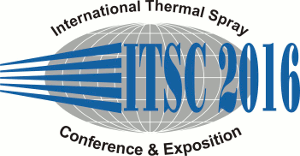
|
4891 |
|
Wednesday, May 11, 2016, Room 3H + 3I + 3J 12:00 PM Power Generation - Fuel Cell I |
|
Cold gas sprayed coatings for photocatalytic water splitting |
|
Maria Villa-Vidaller* / Helmut-Schmidt-University of the Federal Armed Forces, Germany Frank Gärtner/ Helmut Schmidt University, deutschland Agnieszka Rzeszutek/ Helmholtz-Zentrum Geesthacht, Deutschland Thomas Klassen/ Helmut Schmidt University, Deutschland |
|
Recently, hydrogen production via photocatalytic water splitting has attracted remarkable attention and has been extensively studied because of its great potential for low-cost and clean hydrogen production. The photocatalytic material should absorb the photons efficiently, it should facilitate the separation between holes and electrons and it should be electrically conductive to transport the generated charges and avoid the recombination of holes and electrons. A high electrical conductivity and a large specific surface can be achieved by porous metal coatings. The photocatalytic properties can be assured by semiconductor oxides layers as TiO2 or BiVO4 coatings. The photocatalytic coatings can be processed by surface modification, means oxidizing, or by deposition techniques as cold spraying Cold gas spraying is mainly used to produce dense metallic coatings from solid particles aiming for similar properties as the bulk material. In the present work, cold spraying of porous titanium and of semiconductor ceramic coatings and respective characterization is in focus for optimizing photon efficiency. Metallographic characterization was performed by quantitative image analysis using optical microscopy porosity data and SEM analysis for evaluating the coating/substrate interface integrity. Photocatalytically active TiO2 semiconductor layers on the porous titanium coatings were produced by thermal oxidation for the duration of 4 hours, which can be used for water splitting. In an alternative process route, Anatase-TiO2 and BiVO4 coatings were processed by cold spraying. The photoactivity of the different coatings is discussed under viewpoints of phase contents and needed thickness as well as optimum substrate porosity for the use in water splitting. |